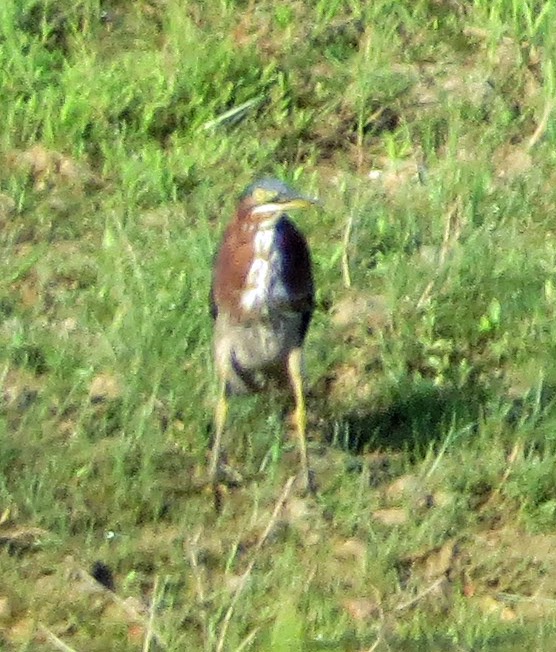I know, I know, I haven't posted here in a while. That's because I haven't been around; the road
beckoned, or rather insisted, and I went.
But I'm back now, in part because there was a new car in the works. In fact, we picked it up the day after I got back home. In a couple days the old car, with about 170K miles on it but still full of life, will be given to a family member to be driven three or four states away forever.
Which is what precipitated this last recycling run. We don't get our recycling picked up at the curb out here, instead we have to cart it to the recycling center over in in the county seat which is just short of 20 miles away. We don't yet have a hitch receiver installed on the new car so had to get one last run in now while we still had the old car in hand.
Recycling starts at the 'trash station' that sits in the barn just outside the door to our living quarters.
This whole thing sits on casters so it can be easily moved around and, starting at the bottom center and working around counter-clockwise, consists of:
A small metal trashcan with tight fitting, odor-blocking lid. The can is double bagged and we keep a supply of small rags handy so there is always a relatively clean one to grab the handle with. The white trash bags are removed, tied off and dumped into the
larger trash container that gets taken up to the road once a week.
A plastic shopping bag hanging from a hook for tossing small trash into without having to open the can. When it gets nasty or full, the plastic bag is tied off and dropped into the can and a fresh bag hung.
A shelf holding a bug cup and a CD. The bug cup is used to trap bugs and things that get inside where we don't want them, the CD is then slid under the cup and the critter is released to the great out-doors.
A lidded box sized to hold a one gallon plastic water jug with a funnel in it. Lift the hinged lid and pour any grease into the funnel. When the jug is about half full replace it with a fresh one. (We have plenty of those as that's where we get our drinking water.)
A series of small blue bins for sorting recycling into non-newspaper paper, glass and tin, and newspaper. These then get emptied into the recycling trailer.
Disenfectant for - well - the nasties.
Again, starting bottom center and working counter-clockwise, the other side of the trash station has:
A reusable shopping bag hanging from a hook in which we dump all #1 and #2 type plastic
A plastic shopping bag hangs behind this and is where we stuff all blown out or otherwise unusable plastic bags and other thin plastics for recycling at the grocery store.
A holder/dispenser for intact plastic shopping bags that we will use later.
When the blue bins or the reusable shopping bag on the trash station get full,
they get taken around beside the barn to where the recycling trailer lives.
Of the three large bins on this trailer, the one at the front gets newspaper in one basket, magazine and other paper in the other and cardboard in the bottom of the bin. Using the front bin for this ensures that sufficient weight, about 10% of the total trailer weight, is always kept on the hitch. (Have you ever seen a trailer going down the road, tail down, nose up, wagging wildly side to side? That's probably because they have more weight behind the axle than in front of it where it belongs.)
The middle bin has one basket for glass and one for tin. In our recycling center aluminum foil goes in with the tin cans and only aluminum cans go in the aluminum bin. Since we don't drink from aluminum cans we don't have a basket for these.
And the last bin, the lightest bin, is for the plastic.
Here the recycling trailer has the bins strapped down and is getting the air checked in all three tires
before being taken to the car where it has been hooked up, lights tested, and is ready to go. At the recycling center, which can get busy at times, we can quickly dump the individual baskets, or entire bins in the case of plastics and cardboard, into the proper receptacles, strap them back down and be on our way.
The eagle-eyed may have noticed that the trailer is equipped with LED tail-lights. A bit of an extravagance perhaps but if there's one thing I don't like messing with, seemingly every time I hook up a trailer, it's those damn original equipment lights!
Now I guess I better do something about getting a receiver and light harness mounted on the new car before we need to make another run. . .














































